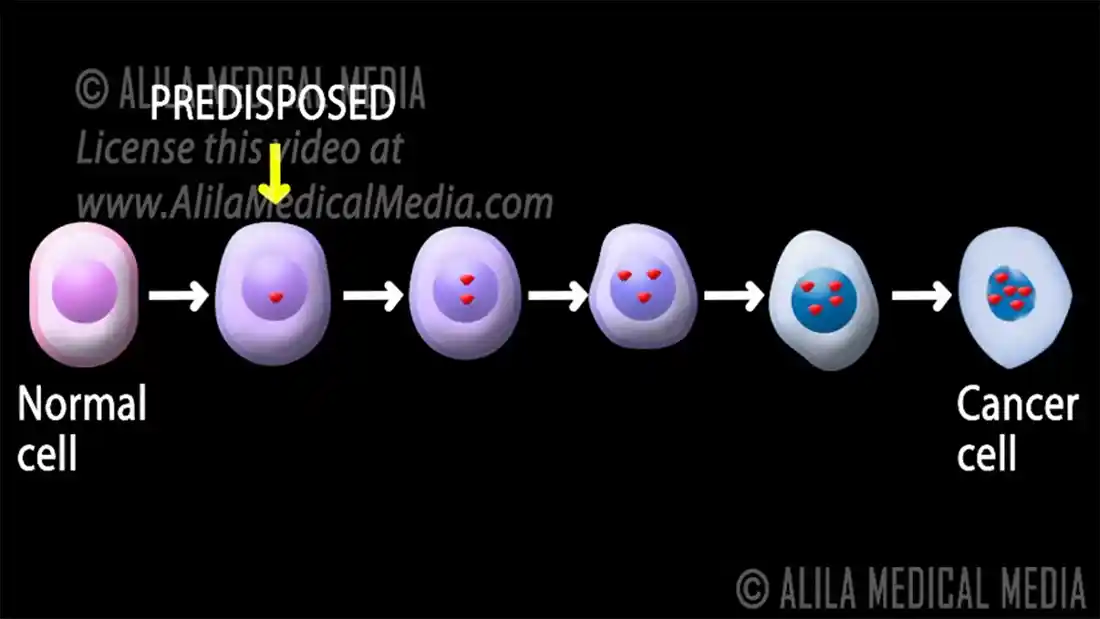

Cancer, tumour, malignant, benign, breast cancer, bowel cancer, prostate cancer, bone cancer, blood cancer, throat cancer, treatment, radiotherapy, chemotherapy, surgery.
The big C. We all know someone who has it, or somebody that has left us because they had it. One in two people will get a cancer of some sort. But, what is it?
Let's find out.
Cancer is a collective term for a series of conditions that make cells in a particular part of the body grow and reproduce uncontrollably. The cells that are cancerous invade healthy surrounding tissues, and it can spread through to other parts of the body.
In the normal process of our body creating new cells, and replacing old cells in our body, this order and process can be broken up, and cells that aren't meant to reproduce or grow do so. This is where cancer starts.
If it goes unchecked, it can spread elsewhere. It can move to other parts of your body, and reproduce erratically in these areas too.
The following still is from a video on cancer, with the following details:
Please click on the image to view the video.

As with most infections, there are a plethora of different types of cancer. They include:
There are also types of conditions and disease that are classed as a cancer too. These include brain tumour, leukaemia and lymphoma.
There are some types of cancer that only affect male or female bodies. For males, they can have testicular cancer, and for females, they can have ovarian cancer, or cancer of the womb. These are specific due to the make-up of the human body.

The largest group of cancers in history from a single source happened at the time of the Chernobyl nuclear disaster, which happened in 1986. People today are still feeling the effects of this disaster.
First, a tumour is an unusual growth on a cell. It happens for various reasons and can happen to any cell in the body. These tumours can be either malignant or benign.
A malignant tumour is a tumour that can be harmful, and that can also spread around the body. These need to be removed as soon as possible, and treated further post-surgery.
A benign tumour is one that doesn't invade other areas and can be removed with one surgery. It is also otherwise harmless and once removed should not appear again.
There are several types of treatment that can be taken or undergone to help fight cancer. They include:
Surgery: this can be done to remove the cancerous cells in your body. If you have lung cancer, for example, you can have the diseased areas removed from your lungs.
Chemotherapy: the most well-known of treatments after surgery, chemotherapy is a type of medicine that kills cancer cells. There are downsides to having chemotherapy: the loss of hair, feeling or being sick, feeling tired all the time, sore mouth, an increase of infection.
Radiotherapy: this is a type of radiation and can be used on patients who have early signs of cancerous cells. If a doctor has found a cancer tumour in someone's body and it is classed a stage 1 or 2 cancer, it can be treated using radiotherapy. There are different types, including external radiotherapy, implants (placed next to the tumour), injections or intraoperative radiotherapy - used for breast cancer and delivered directly to the source.
[1]Cancer Worldwide image, courtesy  CDC.
CDC.
[2]Colorectal Cancer Prevention image, courtesy  Digestive Health
Digestive Health
[3] Stand up 2 Cancer, a Channel 4 production.
Stand up 2 Cancer, a Channel 4 production.
Disclaimer | About Me | Sitemap
Website design by SyntaxHTML.



Blue icons adapted from icons courtesy of Smashicons.com